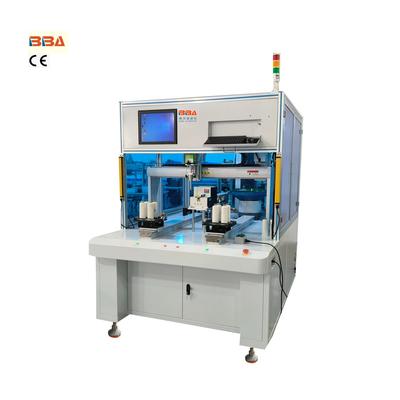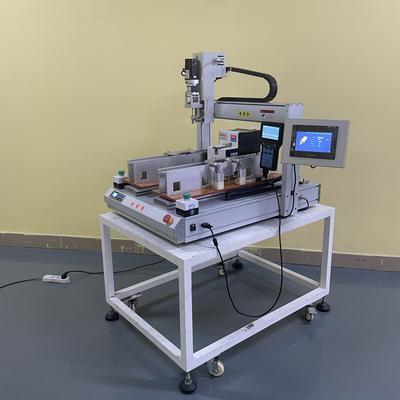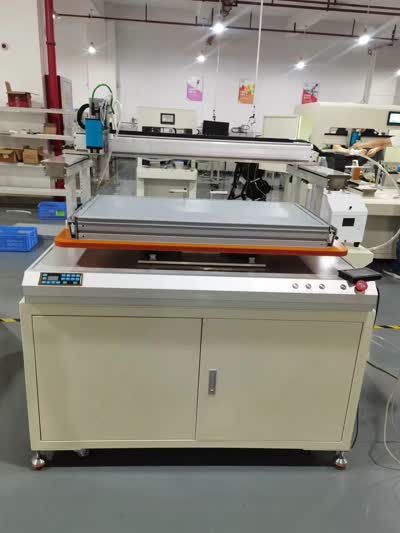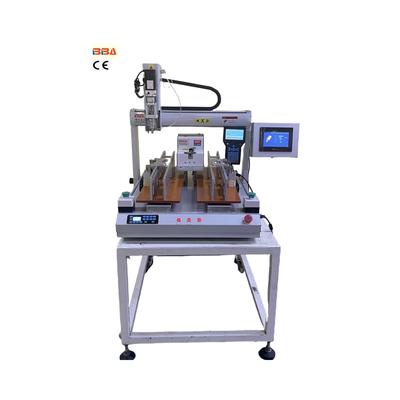Comparing Torque Ranges in Servo Screw Machines: Industrial Applications & Optimization
| Product Name | Applicable industries |
| Servo Screwdriver Robot | Laptop and Tablet Assembly |

Comparing Torque Ranges in Servo Screw Machines
In the evolving landscape of industrial automation, servo screw machines have emerged as critical tools for precision fastening and assembly tasks. A key factor influencing their performance is torque range, which determines the machine’s ability to handle diverse applications. This article explores the significance of torque ranges, compares their applicability across industries, and discusses how optimizing torque parameters can enhance operational efficiency.
The Role of Torque in Servo Screw Machines
Torque, measured in Newton-meters (Nm), refers to the rotational force applied by a servo screw machine during fastening. Machines with adjustable torque ranges offer flexibility for tasks requiring delicate precision (e.g., microelectronics assembly) or high-force applications (e.g., automotive component manufacturing). Advanced servo systems regulate torque dynamically, ensuring consistent output even under variable loads.
Application-Specific Torque Requirements
Different industries demand distinct torque specifications:
- Electronics Manufacturing: Low-torque ranges (0.05–2 Nm) prevent damage to fragile components like circuit boards or smartphone screws.
- Automotive Assembly: High-torque capabilities (10–100+ Nm) are essential for engine parts and structural fasteners requiring exceptional clamping force.
- Medical Devices: Mid-range torque (2–10 Nm) balances precision and reliability for sterilizable equipment and implantable devices.
Design Factors Influencing Torque Performance
A servo screw machine’s torque range depends on components like:
- Motor Type: Brushless servo motors deliver higher torque density and smoother operation than traditional alternatives.
- Gearbox Efficiency: Planetary gears reduce backlash, maintaining accuracy at varying torque levels.
- Control Algorithms: Real-time feedback systems adjust torque output to compensate for material inconsistencies or alignment shifts.
Trends in Torque Optimization
Innovations like adaptive torque profiling enable machines to self-adjust based on sensor data, minimizing over-tightening risks. Additionally, lightweight materials in drivetrains reduce inertia, allowing faster response times without sacrificing torque accuracy. Integration with Industrial IoT platforms further supports predictive maintenance, ensuring torque consistency across production cycles.
Choosing the Right Torque Range
Selecting an optimal torque range involves analyzing application specs, material properties, and cycle-time requirements. Machines with broad torque windows (e.g., 0.1–150 Nm) future-proof operations, accommodating evolving production needs without hardware upgrades.
Understanding torque ranges in servo screw machines empowers manufacturers to achieve higher quality, reduce waste, and streamline workflows. By aligning torque capabilities with operational demands, businesses can unlock new levels of productivity in automated assembly environments.


